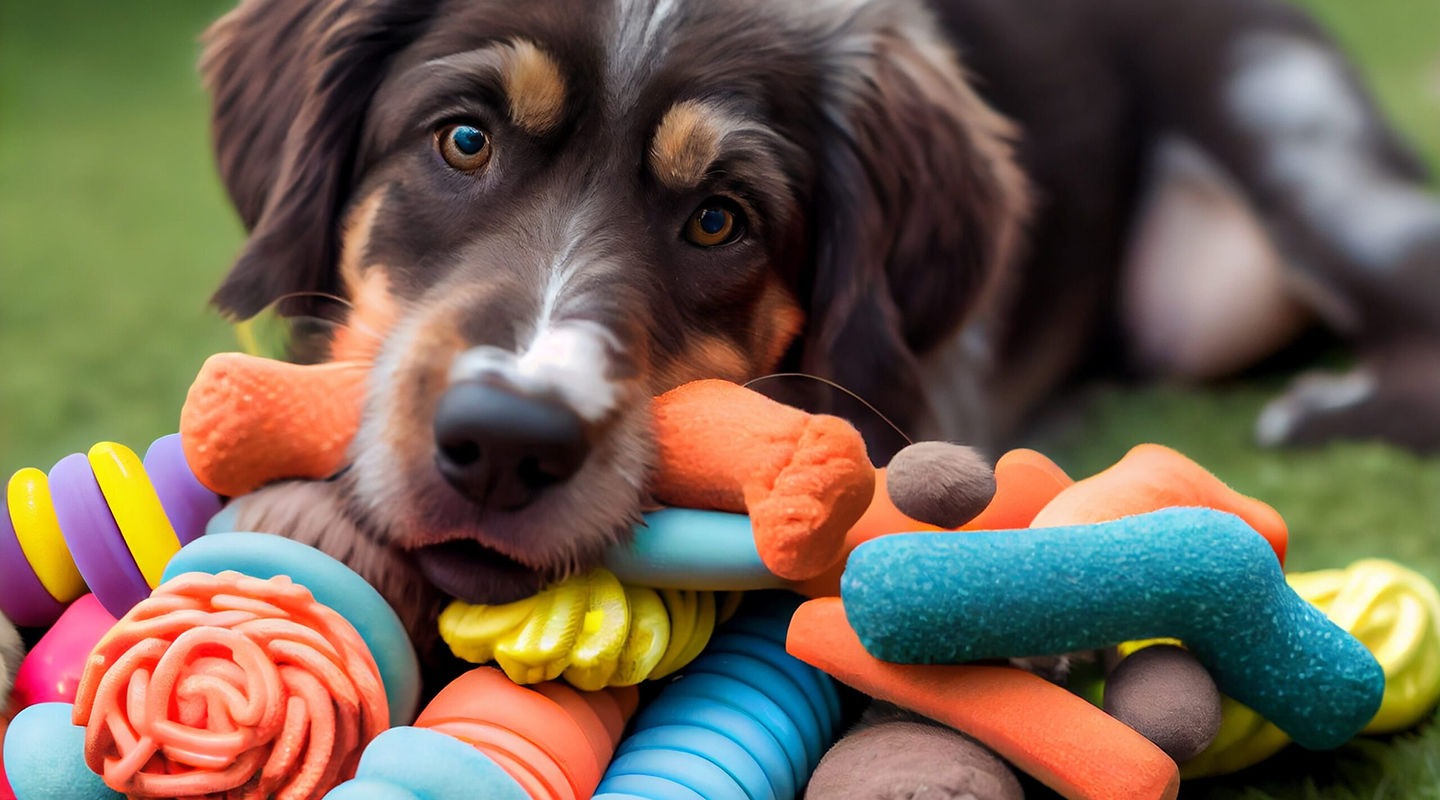
Hamsters With Attitude: Personality Types and Training Tricks
Uncover the quirky personalities of hamsters—from shy to sassy—and learn how to train them using positive reinforcement, natural instincts, and fun tricks to build a stronger bond with your pet.
🐶 Pet Star
35 min read · 1, Jun 2025

Introduction
Hamsters are much more than just small, furry creatures that run on wheels and hoard sunflower seeds. Beneath their cute exterior lies a world of distinctive personalities and intriguing behaviors that make each hamster unique. Understanding these personality types can deepen the bond between pet and owner, making training and interaction far more rewarding.
In this article, we dive deep into the diverse personality traits hamsters exhibit and provide practical, expert-backed training tricks to help you nurture and engage your tiny friend. Whether you’re a first-time hamster owner or a seasoned enthusiast, this comprehensive guide offers fresh insights and useful tips that will transform your experience with these delightful rodents.
Understanding Hamster Personality Types
Hamsters, like humans and other pets, have individual temperaments that affect how they interact with their environment and their owners. Recognizing these traits is key to effective handling and training.
1. The Adventurer
These hamsters are fearless explorers, always eager to investigate new corners of their cage or surroundings. Adventurers are curious and energetic but can sometimes be impulsive, often darting around quickly.
- Training tip: Use interactive toys and maze challenges to channel their energy positively. Reward calm exploration with treats.
2. The Shy One
Shy hamsters tend to be more cautious and reserved. They might hide when new people approach or during changes in their environment. These hamsters take time to trust.
- Training tip: Build trust through gentle, slow interactions. Hand-feed treats and gradually introduce handling sessions to reduce fear.
3. The Social Butterfly
Though hamsters are generally solitary, some display a surprisingly social nature. They might seek attention, respond well to petting, and seem to enjoy interaction more than others.
- Training tip: Engage in frequent, short play sessions. Use consistent, gentle voice tones and positive reinforcement.
4. The Grumpy Gus
These hamsters can be territorial and may bite or hiss when disturbed. Their grumpiness can be a defense mechanism rather than actual aggression.
- Training tip: Respect their space and watch for warning signs. Use slow, calm movements and avoid sudden touches. Try clicker training to build positive associations.
5. The Foodie
Food-motivated hamsters are easy to train using treats but can become fixated on food. They might hoard snacks obsessively.
- Training tip: Use healthy, small treats for training but monitor their diet closely to prevent obesity. Incorporate food puzzles to stimulate their mind.
Why Hamster Personalities Matter for Training
Recognizing personality types can help you tailor training techniques that respect each hamster’s unique nature. Training a shy hamster with the same methods as a bold adventurer will likely lead to frustration for both parties.
Research in animal behavior highlights that personalized approaches improve pet welfare and strengthen bonds. Dr. Emily Robertson, a small mammal behavior expert, notes, "Understanding personality traits in hamsters can transform the human-animal relationship, leading to more effective training and happier pets."
Training Basics: Setting the Foundation
Before delving into specific tricks, setting a solid foundation is essential for all hamsters, regardless of personality.
Creating a Comfortable Environment
A well-designed habitat reduces stress, making training easier. Include:
- Proper bedding for burrowing
- Hiding spots for shy hamsters
- Exercise wheels and tunnels for active types
- Consistent light-dark cycles to regulate natural behavior
Building Trust
Trust is crucial, especially with timid or grumpy hamsters. Begin by:
- Speaking softly near their cage
- Offering treats through the bars before attempting handling
- Using slow, non-threatening hand movements
Short, Positive Sessions
Hamsters have limited attention spans. Keep training sessions between 5-10 minutes, focusing on positive reinforcement without overwhelming your pet.
Training Tricks for Hamsters With Attitude
Now, let’s explore tailored training tricks that align with various hamster personalities.
1. Teaching Your Adventurer to Stay Calm
Adventurers thrive on movement and novelty but can become overstimulated.
- Use a calm verbal cue like “settle.”
- Reward them for sitting still even briefly.
- Gradually increase the duration they stay calm before offering treats.
2. Helping the Shy Hamster Overcome Fear
Patience is key here.
- Start with “target training,” where the hamster learns to touch a stick or your finger for a treat.
- This builds confidence and interaction without forcing contact.
- Over time, gently progress to hand-feeding and light handling.
3. Engaging the Social Butterfly
Social hamsters respond well to interactive play.
- Use small balls or soft toys for fetch-like games.
- Train simple commands such as “come” by luring with treats.
- Regular handling sessions strengthen their social comfort.
4. Managing the Grumpy Gus
Avoid direct confrontation with grumpy hamsters.
- Use clicker training to reward calm, non-aggressive behavior.
- Train them to accept handling by associating your approach with treats.
- Respect their mood cycles and avoid forcing interaction during irritable periods.
5. Foodie Fun: Puzzle and Reward Training
For hamsters motivated by food:
- Introduce puzzle feeders to challenge their intellect and reduce boredom.
- Use treats as a reward for simple tricks like “spin” or “stand up.”
- Monitor treat quantity to maintain a healthy diet.
Advanced Training Techniques
Once the basics are mastered, you can explore more complex behaviors.
Building a Hamster Obstacle Course
Hamsters with high energy and intelligence enjoy obstacle courses.
- Use tunnels, ramps, and small hurdles.
- Train your hamster to navigate the course using treats as motivation.
- This not only entertains but improves physical and mental health.
Training Hamsters to Respond to Their Name
Though hamsters don’t respond as clearly as dogs, consistent use of a specific name during feeding and interaction can help them recognize their “call.”
- Pair their name with positive experiences.
- Reward them when they approach after hearing their name.
Teaching Tricks Like “Spin” and “Jump”
Simple tricks can enhance your hamster’s stimulation.
- Use a finger or small stick as a lure.
- Reward the hamster for completing the action.
- Patience and repetition are essential.
Understanding Hamster Behavior: Communication and Signals
Hamsters communicate through body language and sounds. Recognizing these cues can improve training success.
Body Language Basics
- Ears up and alert: Curious and ready to engage
- Flattened body and quick movements: Fear or readiness to flee
- Scent marking: Territorial behavior
- Nipping or biting: Warning or defense
Sounds and Their Meanings
- Soft squeaks: Contentment or mild excitement
- Loud squeals: Pain or distress
- Teeth grinding: Nervousness or discomfort
By reading these signals, owners can adapt training and interaction accordingly, avoiding stress or aggression.
Expert Insights on Hamster Personality and Training
Dr. Karen Langley, a veterinarian specializing in exotic pets, emphasizes the importance of customized care:
“Hamsters are highly individualistic. Observing their responses to stimuli and adjusting your approach is vital. Training isn’t just about tricks—it’s about communication and trust.”
Recent studies in animal cognition have shown that hamsters can learn to navigate mazes and respond to conditioning methods with surprising speed, particularly when training matches their personality traits.
Enriching Your Hamster’s Life: Activities That Match Personality Types
Enrichment is a cornerstone of happy, healthy hamsters. Activities designed to stimulate their natural instincts and fit their personalities not only prevent boredom but also improve training responsiveness.
For The Adventurer: Dynamic Exploration
Adventurous hamsters crave novelty and movement. Rotate toys weekly to keep their environment stimulating. Introduce new materials such as untreated cardboard tubes, wooden blocks, or safe natural branches to climb.
- Example Activity: Create a “discovery box” filled with shredded paper, hidden treats, and small toys. This mimics natural foraging behavior and satisfies their curiosity.
- Training Boost: Use these discovery sessions as opportunities to practice calm behavior and recall commands.
For The Shy One: Safe, Predictable Routines
Shy hamsters benefit from consistent daily routines. Introduce new objects slowly, allowing them to sniff and explore at their own pace.
- Example Activity: Place a cozy hideaway next to your hand during training to encourage approach.
- Training Boost: Pair new routines with familiar treats to associate safety with learning.
For The Social Butterfly: Interactive Playtime
Social hamsters enjoy interaction beyond the cage. Set up supervised playdates with safe environments outside the cage.
- Example Activity: Use small soft balls or hamster-safe toys to encourage fetch-like games.
- Training Boost: Social hamsters often respond well to voice commands, so use verbal cues frequently.
For The Grumpy Gus: Respect and Reward Calm
For hamsters prone to irritation, it’s important to provide plenty of quiet retreats and avoid overstimulation.
- Example Activity: Quiet handling sessions combined with calming scent cues, like placing a familiar cloth with your scent nearby.
- Training Boost: Employ clicker training to reward moments of calm, reducing stress and building tolerance for interaction.
For The Foodie: Puzzle Challenges
Food-motivated hamsters enjoy mental stimulation through puzzles.
- Example Activity: Puzzle feeders with small compartments challenge them to work for their treats, preventing obesity and boredom.
- Training Boost: Gradually increase puzzle complexity to keep them engaged and reinforce problem-solving skills.
Socialization Beyond the Cage: Hamster Interaction and Handling Tips
Despite their solitary nature, hamsters can benefit from careful socialization with humans and, in rare cases, other hamsters of the same species—though caution is warranted to avoid aggression.
Human Interaction
Regular, gentle handling builds trust and reduces fear. Start slow with shy hamsters, progressing from offering treats through cage bars to brief, supervised handling.
- Pro Tip: Use gloves during initial handling if your hamster tends to bite, to protect both parties.
Introducing Multiple Hamsters
Syrian hamsters are strictly solitary and should never be housed together. However, dwarf hamsters like Roborovskis or Campbell’s can sometimes tolerate companionship if introduced properly.
- Method: Use neutral territory and supervised introductions. Look for signs of aggression such as fur pulling or loud squeaking and separate immediately if needed.
- Training Impact: Social hamsters may display more complex behaviors and can benefit from play and training that simulates group interaction.
Addressing Behavioral Problems: When Attitude Turns to Issues
Even the most charming hamsters can develop behavioral problems if their needs aren’t met or if they’re stressed.
Excessive Biting
Often a sign of fear or pain. Evaluate your handling techniques, habitat conditions, and health status.
- Solution: Slow down interactions, use protective gloves, and consult a vet if biting persists.
Destructive Chewing
Hamsters naturally chew to keep teeth healthy. However, destructive chewing on cage bars or accessories can signal boredom or stress.
- Solution: Provide plenty of chew toys made of safe materials like untreated wood or cardboard.
Escaping Attempts
Hamsters with strong adventurous traits may try to escape their enclosures, risking injury.
- Solution: Secure cages with tight lids, and increase enrichment to reduce escape motivation.
Conclusion
Hamsters may be small, but their personalities and potential for learning are impressively diverse and complex. From the bold and adventurous to the shy and reserved, each hamster comes with its own set of traits that shape how it interacts with the world and its owner. Recognizing and respecting these personality types is the first step toward successful training and a rewarding relationship.
Training a hamster is not simply about teaching tricks—it’s about building trust, understanding body language, and creating positive experiences that cater to their individual nature. Whether it’s the curious adventurer who thrives on new challenges or the cautious shy hamster who needs gentle encouragement, tailoring your approach ensures that both pet and owner enjoy the process.
Moreover, environmental enrichment, consistent routines, and attention to nutrition and health all play vital roles in shaping behavior and enhancing training outcomes. Using tools like clickers, puzzle feeders, and obstacle courses not only stimulate their minds but also strengthen the bond between you and your tiny companion.
Scientific research continues to reveal just how intelligent and emotionally rich hamsters can be, dispelling myths and opening new doors for more humane and effective training techniques. As owners, the more we understand about our hamsters’ unique personalities and learning capabilities, the better we can meet their needs, improving their quality of life.
Ultimately, a hamster with attitude is a hamster with character—and that character deserves patience, respect, and plenty of love. By embracing their individuality and engaging them thoughtfully, you unlock endless possibilities for fun, learning, and companionship with these charming little pets.
Q&A
Q1: What are the main hamster personality types?
A: The main personality types include the Adventurer, Shy One, Social Butterfly, Grumpy Gus, and Foodie, each exhibiting distinct behaviors and needs.
Q2: How can I tell if my hamster is shy or social?
A: Shy hamsters tend to hide and avoid contact, while social hamsters seek interaction, respond to petting, and enjoy playtime with their owner.
Q3: What’s the best way to train a grumpy hamster?
A: Use clicker training, respect their space, avoid sudden movements, and reward calm behavior to build trust gradually.
Q4: Can hamsters learn tricks like dogs?
A: Yes, hamsters can learn simple tricks such as “spin” or “come” through consistent positive reinforcement, although their learning pace is slower.
Q5: How important is environmental enrichment?
A: Very important; enriched environments with tunnels, chew toys, and puzzles reduce boredom and support mental and physical health.
Q6: Is it safe to keep multiple hamsters together?
A: Only certain dwarf species tolerate companionship under strict supervision; Syrian hamsters must always be housed alone due to territorial aggression.
Q7: What role does diet play in behavior?
A: A balanced diet supports health and training responsiveness; overfeeding treats can lead to obesity and reduced motivation.
Q8: How long should training sessions be?
A: Short, positive sessions lasting 5-10 minutes are ideal to maintain your hamster’s attention and prevent stress.
Q9: What tools help with hamster training?
A: Clickers, puzzle feeders, obstacle courses, and treat dispensers are effective tools for stimulating and rewarding hamsters.
Q10: Can hamster personality change over time?
A: Yes, changes in environment, health, and socialization can influence personality and behavior, so ongoing observation is key.
Similar Articles
Find more relatable content in similar Articles

Sustainable Pet Products: What to Look for in 2025...
As sustainability becomes a ce.. Read More

How Pets Strengthen Family Bonds...
Pets are more than just compan.. Read More

How Climate Change Affects Wild and Domestic Animals...
Climate change is dramatically.. Read More

Vegan Pet Toys and Accessories That Last Longer...
As pet owners grow more eco-co.. Read More
Explore Other Categories
© 2024 Copyrights by rPets. All Rights Reserved.